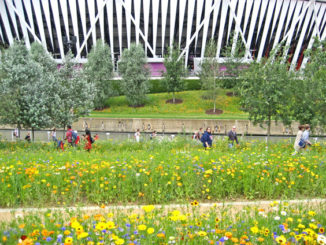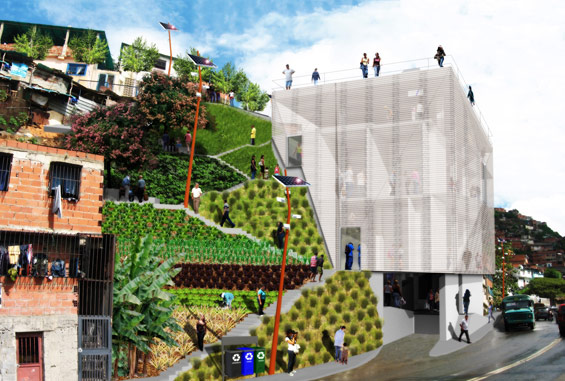
In Venezuela 93% of the population live in cities, half of which inhabit urban slums. Upgrading initiatives to date have tended to focus on housing solutions to improve living conditions. However, graver issues affect the livelihood of slum dwellers on a daily basis. Alarmingly high homicide rates, frequent adolescent pregnancies and very high school dropout rates compromise every slum dweller´s quality of life and condemn them to a perpetual cycle of poverty. Health issues and low self dignity associated with living in severely degraded environmental conditions also diminish their livelihood. Improving the situation, therefore, goes beyond supplying mortar and brick to build better houses; it requires a holistic approach that seriously considers social and environmental deficiencies.
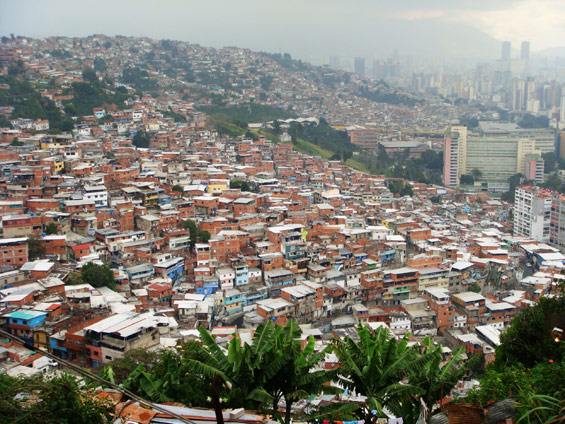
Over 1500 families live in La Morán´s 37 acres. It is divided into several sectors with invisible borders defended by youth gangs. Weekends are plagued by gun fire resulting in wounded or murdered young boys. Nearly half of La Morán´s young women become pregnant before turning 19 as a way of becoming recognized by their community and achieving independence. The underlying reason is that less than 1 of every 10 children obtains a high school degree generating excessive amounts of leisure time among youth and leaving them vulnerable to peer pressure and shortsighted life projects.
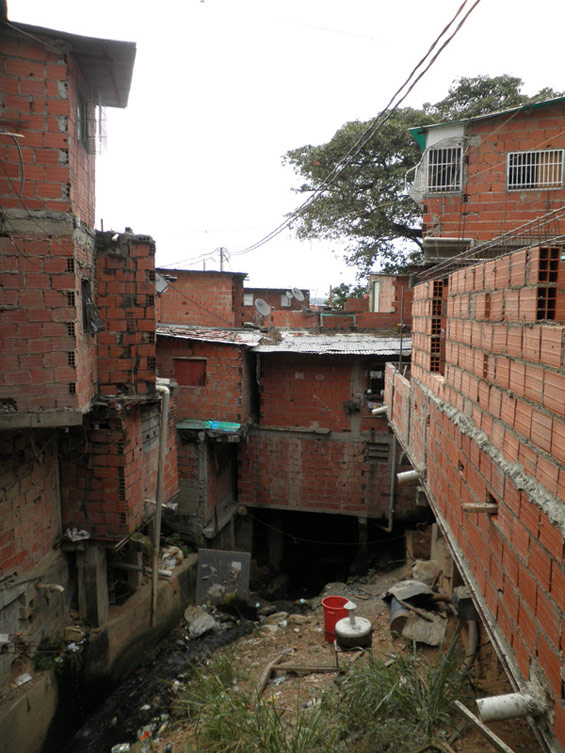
Unclaimed interstitial spaces are prime locations for the accumulation of solid waste. Over 12 dumps have been identified in La Morán, some of which have been operative for over 10 years. Every so often trash is burned to make way for more. Topographical conditions and limited vehicular access make public trash collection difficult. La Cañonera creek represents an open sewage channel that collects waste from 400 households. The adverse health consequences generated are self evident; the disorder and apathy they reflect affect the dignity of inhabitants and condones illicit behavior (“broken glass theory”).
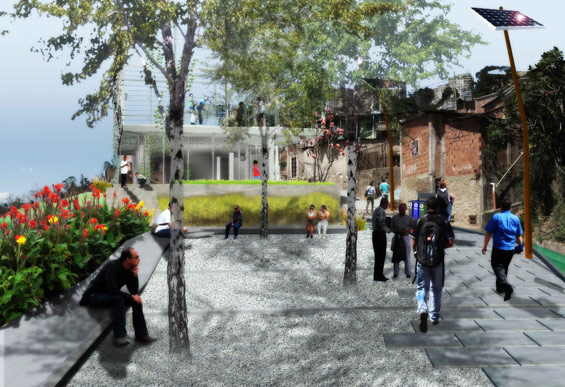
Periodic workshops led by FUDEP, a local NGO, have discussed these social issues and begun to build consensus among the community. Local counsels agree that upgrading projects should offer healthy and productive activities for youth and eradicate the sense of anarchy and disorder produced by the tacit acceptance of waste and sewage dumping.
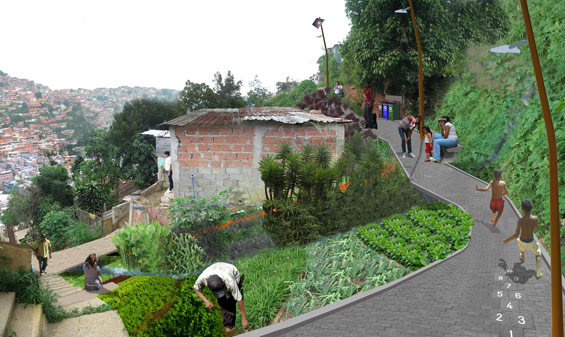
With these considerations in mind, the project at hand encompasses 3 combined initiatives: 1. Clearing 12 waste dumps and converting them either into public space with urban furniture, solar public lighting, recreation areas, urban agriculture, land stabilization through vegetation and aggressive reforestation; 2. The sanitation of La Cañonera creek with separate parallel sewage collectors and public space interventions similar to those discussed above articulated as a network of open parks; and 3 a waste management system comprised of a youth cooperative formed by young women and men that will be responsible for maintaining public areas clean and the daily management of 20 new trash collection points together with a new recycling center that will also house a child day care center, community gathering spaces and a green recreation area on its roof.
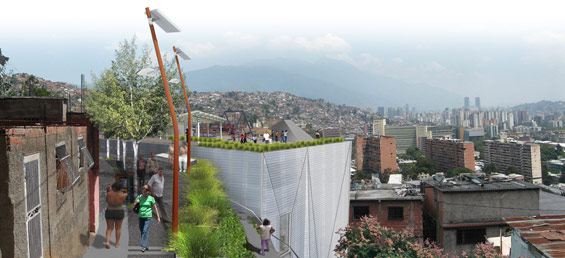
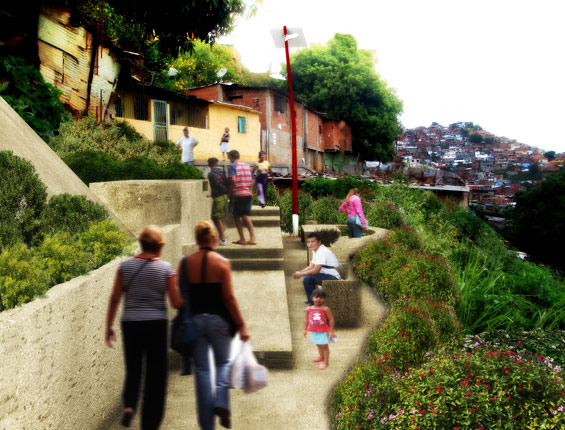
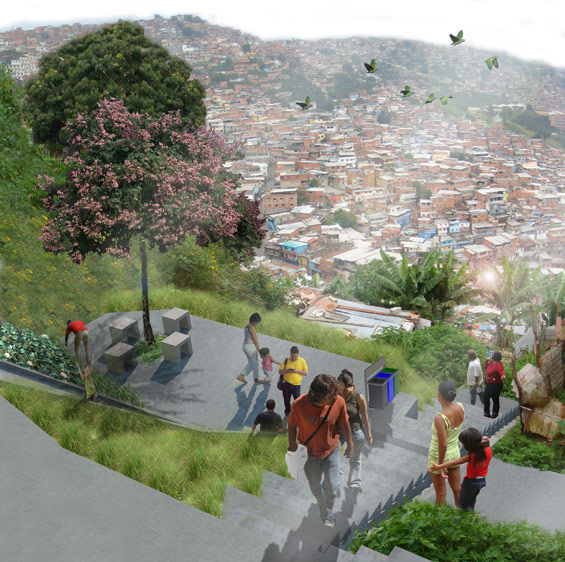
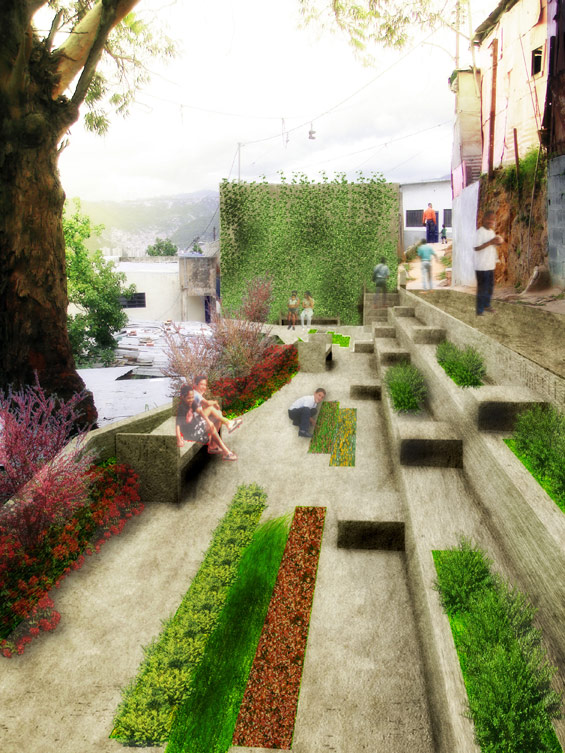
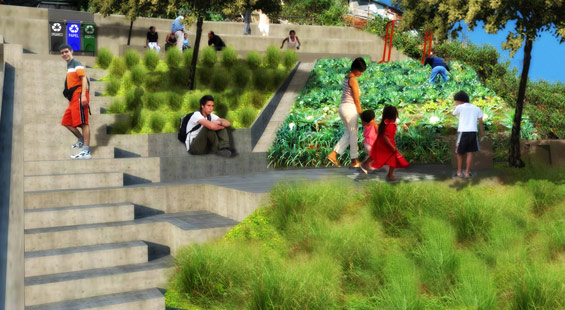
La Moran – Strategies to Improve its Quality of Life
PROJECT TYPE
Slum upgrading – conceptual/built
PROJECT DETAILS
Client: La Asociación Civil Comunitaria La Morán-Silsa
Social workers: FUDEP Fomento para el Desarrollo Popular
Rosalba Gil, Marigloria Olivo
Sponsors: CAF and DVC Dividendo Voluntario para la Comunidad
Architecture: Enlace Arquitectura
Elisa Silva (principal) Leonardo Robleto C, Sergio Dos Santos, Katherine Aguilar, Adriana Ríos, Rafael Malaguera, José Bigott
Project phase: Under construction
IMAGE CREDITS: Enlace Arquitectura

